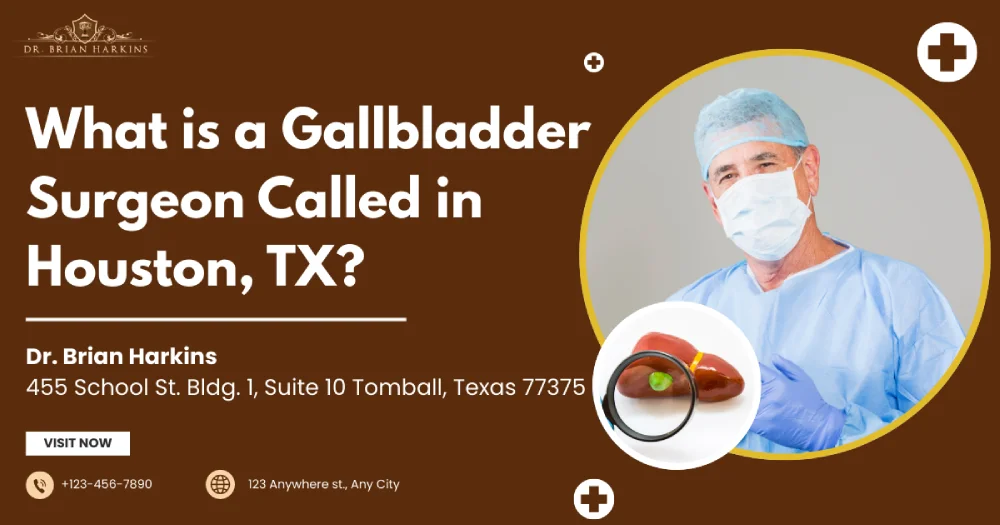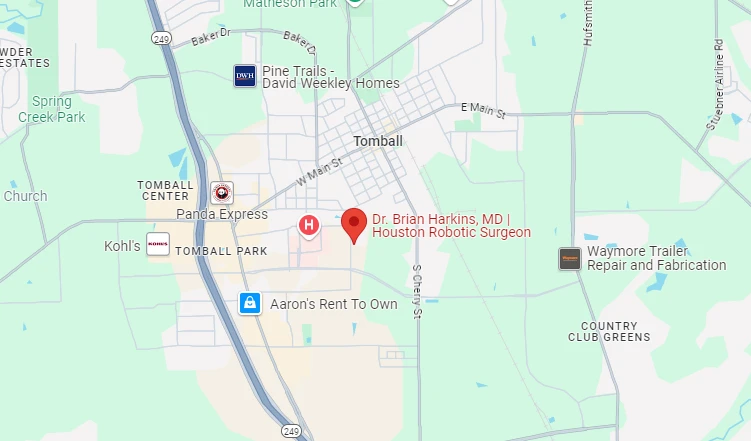
A surgeon who specializes in gallbladder removal in Houston, TX is generally called a general surgeon or, for more complex biliary cases, a gastrointestinal (GI) surgeon. Both branches of general surgery handle the biliary tract, which includes the gallbladder, common bile duct, liver, and pancreas. Because the gallbladder is a pear-shaped organ tucked under the right side of the abdomen, diagnosing and treating it requires a keen understanding of the flow of bile into the small intestine.
In the Greater Houston area, most cholecystectomies—whether laparoscopic cholecystectomy, open cholecystectomy, or single-incision procedures—are performed by board-certified general surgeons. Some tough cases—like gallbladder cancer, severe inflammation of the gallbladder, or bile duct blockage—shift to GI surgeons fellowship-trained in hepatopancreatobiliary (HPB) techniques.
If you're wondering, what is a gallbladder surgeon called in Houston, TX?, the answer depends on your diagnosis and its complexity. From routine gallstone removal to complex bile duct repair, Houston offers specialists with the right credentials to handle every case.
The term “gallbladder surgeon” isn’t an official certification, yet two specialties dominate this sphere of care for patients: general surgery and GI/HPB surgery. Here’s how each handles problems that arise inside the gallbladder or along the bile duct.
| Specialty | Typical Cases | Extra Training | Houston Facilities | Average Annual Volume |
|---|---|---|---|---|
| General Surgeon | Simple gallstones, biliary dyskinesia, gallbladder may be inflamed | 5-year residency | Community hospitals, HCA Houston Healthcare, Sugar Land | 150–300 laparoscopic cholecystectomies |
| GI/HPB Surgeon | Bile duct blockage, pancreas involvement, gallbladder cancer | HPB fellowship | Houston Methodist, MD Anderson, Memorial Hermann | 75–150 advanced biliary cases |
Because the gallbladder is located beneath the liver, its disorders often disguise themselves as common abdominal pain. Here are the usual culprits that lead doctors to recommend laparoscopic cholecystectomy or, less commonly, open cholecystectomy with a large incision.
Hard deposits of cholesterol or bilirubin form inside the gallbladder, creating blockage. Symptoms of gallstones include sharp pain after a high-fat meal, bloating, and nausea.
Inflammation of the gallbladder lining triggers fever, tenderness, and sometimes jaundice. Surgical removal within 72 hours prevents perforation or spread of infection.
Gallbladder ejection fraction drops below 35% on a HIDA scan. When the organ fails to squeeze, bile stagnates, causing chronic discomfort and poor digestion.
Stones leave the gallbladder, slip into the pancreatic duct, and inflame the pancreas. Treatment usually pairs ERCP stone extraction with gallbladder removal during the same admission.
Avoid waiting until you’re doubled over in the ER or at a surgery center. If you check two or more boxes below, schedule an appointment with a specialist near you—whether in Sugar Land, Tomball, or the Medical Center—within the week.
With 300-plus board-certified general surgeons and dozens of GI/HPB surgeons in Houston, finding the best doctors can feel daunting. Follow this guide for personalized care.
Look past star ratings and verify comments about pain control, clarity of billing, and communication. Top doctors often explain complications like bile duct injury or gallbladder infection before surgery day.
Houston’s dense medical landscape—from the Texas Medical Center to suburban Sugar Land—makes second opinions almost effortless. Peace of mind helps recovery.
| Insurance Status | Typical Patient Cost | Notes |
|---|---|---|
| In-Network PPO | $800–$2,500 | Deductible + coinsurance |
| High-Deductible Plan | Up to $6,500 | Use HSA/FSA funds |
| Self-Pay Cash | $7,000–$15,000 | Includes surgeon, facility, anesthesia |
Some patients hope to sidestep surgery. Medications, diet, or endoscopy can buy time, but treatment for gallstones remains surgical removal of the gallbladder for most symptomatic cases.
Slowly dissolves cholesterol stones <5 mm, yet stones often recur once therapy stops.
Removes common bile duct stones endoscopically. Surgeons still recommend cholecystectomy afterward to prevent new stones.
Gallbladder trouble can feel overwhelming, but Houston’s robust network of general and GI surgeons—means expert help is nearby. Identify signs and symptoms early, confirm board certification, and weigh minimally invasive surgery options to speed recovery. Check insurance details, arrange post-op support, and don’t hesitate to seek a second opinion. Armed with this knowledge, you can choose the right specialist, schedule surgery confidently, and return to a pain-free life sooner rather than later. If your gallbladder is calling for help, make the call today—you’ll thank yourself tomorrow.
A gallbladder surgeon in Houston is usually a board-certified general surgeon. For more complex biliary issues—like pancreatic involvement or bile duct strictures—a GI or HPB surgeon may be involved. Most standard laparoscopic cholecystectomies are safely handled by general surgeons at hospitals such as Houston Methodist or HCA Houston Healthcare.
Rapid weight loss after bariatric procedures increases the risk of gallstone formation because cholesterol saturates bile more quickly. Many bariatric surgeons in Houston prescribe ursodiol or recommend prophylactic gallbladder removal if ultrasound already shows stones before weight-loss surgery.
An open cholecystectomy involves a larger incision under the right ribs. Surgeons choose it when severe scarring, gallbladder cancer, or uncontrolled infection limits safe laparoscopic or minimally invasive surgery. Recovery is longer—usually three to five days in the hospital followed by four to six weeks of restricted activity.
Yes. Stones can migrate and inflame the pancreas (gallstone pancreatitis) or block bile flow into the small intestine, causing jaundice and infection. If stones enter the common bile duct, ERCP followed by laparoscopic cholecystectomy is the standard treatment sequence.
If imaging already shows gallstones with symptoms, start with a general surgeon. They can coordinate with a gastroenterologist for ERCP if duct stones are present. For vague symptoms without stones, a GI doctor may run endoscopy or motility tests before surgery becomes an option.
Blood tests revealing elevated white cells, bilirubin, alkaline phosphatase, or amylase help doctors determine whether inflammation of the gallbladder or pancreas exists. Abnormal labs push surgeons to operate sooner to prevent sepsis or organ damage. Normal labs don’t rule out gallstones but can influence timing.
Walking is encouraged the day of surgery. Light cardio such as stationary biking usually resumes after one week. Strength training and heavy lifting wait until two to three weeks for laparoscopic cases—or six weeks for open procedures—to avoid hernia formation at the incision sites.
Nonsurgical options—ursodiol, diet changes, or shock-wave lithotripsy—have limited success and high recurrence rates. They can ease mild symptoms or buy time if a patient is unfit for anesthesia, but surgical removal remains the gold-standard treatment for symptomatic gallstones.
Without the gallbladder, bile trickles continuously from the liver into the intestine instead of being stored and released in spurts. Most people adapt quickly, although a small percentage experience chronic diarrhea that often responds to bile-acid sequestrants or dietary adjustments.
Cholecystectomy rarely changes blood cholesterol because the liver still produces bile acids derived from cholesterol. Diet and exercise remain the main tools for managing serum cholesterol after surgery, just as they were before gallbladder disease developed.


Dr. Brian Harkins is a renowned surgeon specializing in advanced, minimally invasive, and robotic surgical techniques. With a dedication to innovation and personalized patient care, he has transformed countless lives by delivering exceptional outcomes.

I want a website like this, where do i start?